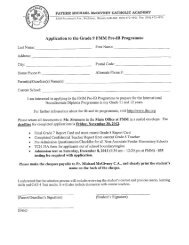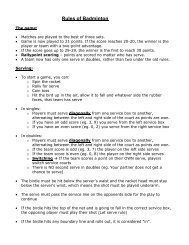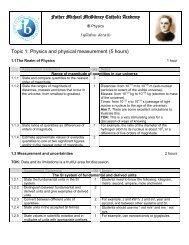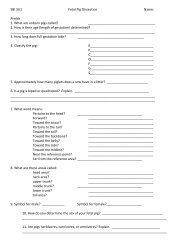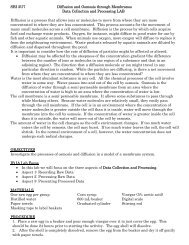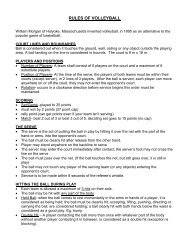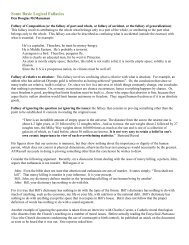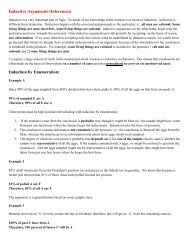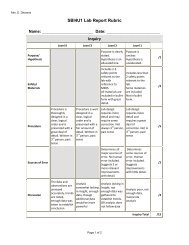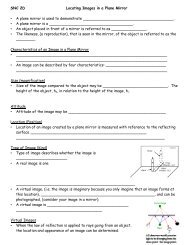IB COMMAND TERMS
IB COMMAND TERMS
IB COMMAND TERMS
Create successful ePaper yourself
Turn your PDF publications into a flip-book with our unique Google optimized e-Paper software.
<strong>IB</strong> <strong>COMMAND</strong> <strong>TERMS</strong><br />
These command terms indicate the depth of treatment required for a given assessment statement. These command<br />
terms will be used in examination questions, so it is important that students are familiar with the following definitions.<br />
Objective 1<br />
Define<br />
Give the precise meaning of a word, phrase or physical quantity.<br />
Draw<br />
Label<br />
List<br />
Measure<br />
State<br />
Objective 2<br />
Annotate<br />
Represent by means of pencil lines.<br />
Add labels to a diagram.<br />
Give a sequence of names or other brief answers with no explanation.<br />
Find a value for a quantity.<br />
Give a specific name, value or other brief answer without explanation or calculation.<br />
Add brief notes to a diagram or graph.<br />
Apply<br />
Calculate<br />
Describe<br />
Distinguish<br />
Estimate<br />
Identify<br />
Outline<br />
Objective 3<br />
Analyse<br />
Use an idea, equation, principle, theory or law in a new situation.<br />
Find a numerical answer showing the relevant stages in the working (unless instructed not to do<br />
so).<br />
Give a detailed account.<br />
Give the differences between two or more different items.<br />
Find an approximate value for an unknown quantity.<br />
Find an answer from a given number of possibilities.<br />
Give a brief account or summary.<br />
Interpret data to reach conclusions.<br />
Comment<br />
Compare<br />
Construct<br />
Give a judgment based on a given statement or result of a calculation.<br />
Give an account of similarities and differences between two (or more) items, referring to both<br />
(all) of them throughout.<br />
Represent or develop in graphical form.
Deduce<br />
Derive<br />
Design<br />
Determine<br />
Discuss<br />
Evaluate<br />
Explain<br />
Predict<br />
Show<br />
Sketch<br />
Solve<br />
Suggest<br />
Reach a conclusion from the information given.<br />
Manipulate a mathematical relationship(s) to give a new equation or relationship.<br />
Produce a plan, simulation or model.<br />
Find the only possible answer.<br />
Give an account including, where possible, a range of arguments for and against the relative<br />
importance of various factors, or comparisons of alternative hypotheses.<br />
Assess the implications and limitations.<br />
Give a detailed account of causes, reasons or mechanisms.<br />
Give an expected result.<br />
Give the steps in a calculation or derivation.<br />
Represent by means of a graph showing a line and labelled but unscaled axes but with<br />
important features (for example, intercept) clearly indicated.<br />
Obtain an answer using algebraic and/or numerical methods.<br />
Propose a hypothesis or other possible answer.




